Blizzard Entertainment’s acclaimed hero shooter, Overwatch, has fallen into an awkward state during its final years. Once successful and widely adored, the direction of its gameplay had shifted with time, as its popularity dwindled among the masses. To this day, Overwatch has struggled to revisit those glory days.
Overwatch had become grueling, bland, and slow with its changes. The careful balance of shooter and MOBA-style mechanics that defined the title were disrupted by the rise of frustrating stun and crowd control abilities. Overwatch’s tank hero combinations were also spamming barriers and other damage mitigation abilities over the battlefield faster than most damage characters could burn through.
The entire Overwatch experience now revolved around these dynamics, leading to sluggish and boring stalemates, and generally frustrating engagements. Blizzard Entertainment addressed player concerns with several balancing tweaks, but it became clear Overwatch needed something bigger to address its problems.
Enter Overwatch 2, a massive restructuring of the original Overwatch that’s so big the developers are calling it a sequel. Changes uproot the fundamentals with a new free-to-play model, adopting trends like a battle pass and seasonal updates. The game also pivots to five-versus-five multiplayer, with sweeping hero changes, kickstarting a new era for Blizzard’s shooter franchise.
And after playing Overwatch 2 extensively ahead of its Oct. 4 launch, I’m confident this is the bold step forward that Overwatch needed, though it’s not without its caveats from day one.
Disclaimer: This review-in-progress was made possible by early access to Overwatch 2 provided by Activision Blizzard. The developer did not see the contents of this review-in-progress before publication.
Overwatch 2 gameplay: 5v5, new heroes, and more
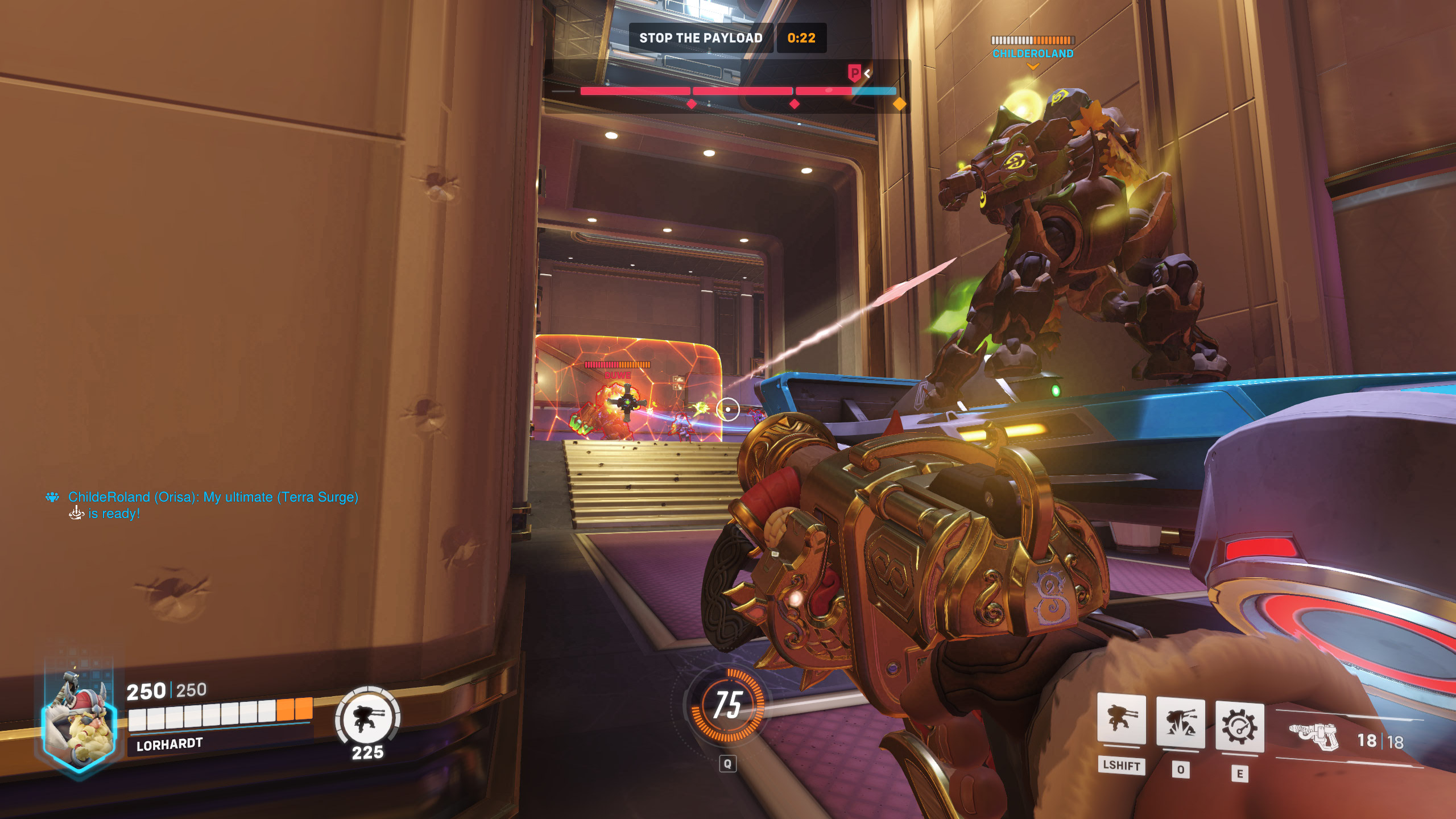
Overwatch 2 transitions the game’s multiplayer to a 5v5 format and brings multiple massive balance changes. One tank hero has been removed from each team, the number and potency of crowd control abilities have been reduced, and hero reworks have adapted them to the game’s new structure. Tanks have been reworked so that they’re more durable and less reliant on their protective abilities, while damage characters are rewarded with a short buff to movement and reload speed after each kill. To compensate for the missing tank, support heroes have been given an auto-heal passive and additional movement tools to help when needed.
I’ve had more fun in Overwatch 2 than I’ve had with the original Overwatch in years.
These radical changes have proven divisive, with some arguing that the loss of a tank and the widespread reduction in stuns alienates casual players and puts too much of an emphasis on aim skill. However, the new multiplayer structure can promote active playstyles and helps individual players make more of an impact, leading to more exciting gameplay for the average player.
I fall into the latter camp — and I’ve had more fun in Overwatch 2 throughout its early access review period than I’ve had with the original Overwatch in years. I usually play tank heroes like Reinhardt and Winston, and being less reliant on my shields and more effective at brawling makes the role more fulfilling. I’ve admittedly spent less time with the game’s other roles, but so far, I’ve found that damage heroes feel much more rewarding and impactful without the presence of a tank barrier. Support heroes, meanwhile, are generally more capable of defending themselves and escaping to safety when necessary, though I suspect there will be some growing pains as players get used to not having a second tank.
Overwatch 2 has also introduced some huge quality-of-life updates, including a ping system for quick-and-dirty communication and an improved scoreboard that displays the K/D, damage, healing, and damage mitigation of the lobby. These tools make it easier to quickly grab the attention of your allies or figure out why your team is struggling.
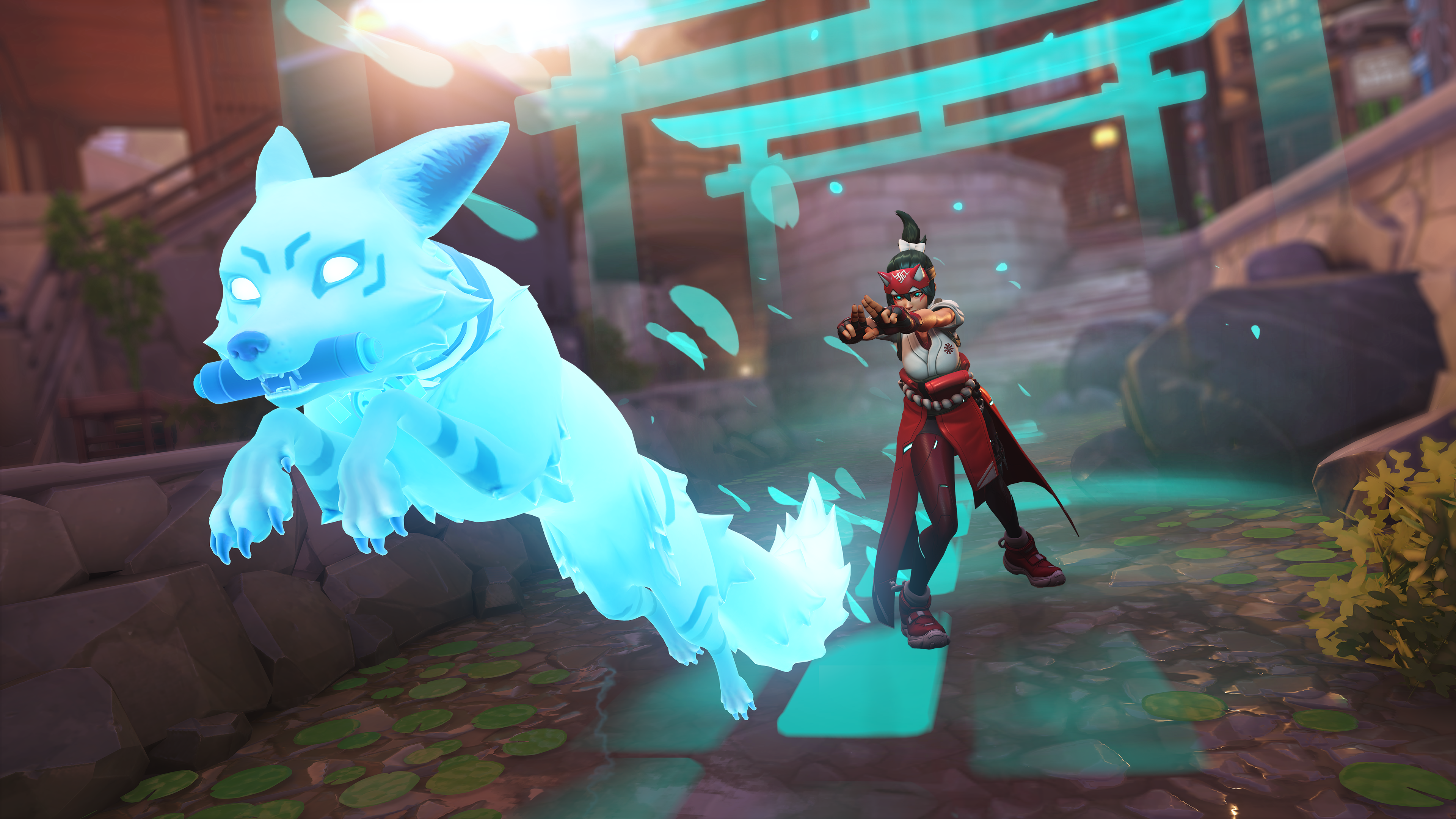
Overwatch 2’s core gameplay changes are also accompanied by three new heroes: Sojourn, Junker Queen, and Kiriko. Sojourn is a mobile, mid-range damage hero with a powerful railgun, and feels like a character you’d get if you fused Soldier: 76 and Ashe. Junker Queen, on the other hand, is an offensive juggernaut tank capable of buffing her allies and controlling space with her scattergun, throwing knife, and large battle axe. Finally, there’s Kiriko, a “battle support” with an emphasis on single-target healing, critical hit damage, removing enemy debuffs, and buffing allies with faster attacks, movement, reloading, and ability cooldowns via her Ultimate.
These characters are fun additions to the Overwatch roster, but Kiriko has stood out the most. Her Healing Ofuda and throwable Kunai abilities give her kit a fun “yin and yang” feel between healing and damage, and she can make a huge impact with her Protection Suzu, providing brief invulnerability while cleansing negative status effects. The Kitsune Rush Ultimate is also a fantastic tool for pushing objectives, and watching your teammates bowl over the enemy with the buffs you gave them is immensely satisfying.
Overwatch 2’s launch also introduces a new mode called Push. In this mode, two teams fight over a large robot, and once a team gains control, it pushes a barrier toward the enemy team’s home base. To win, teams either have to successfully help the robot reach the enemy team’s base or need to have made more progress before the timer hits zero. I’ve had a ton of fun with Rush so far, as its chaotic nature offers something a little different than Overwatch’s traditional Control, Escort, and Hybrid matches. It’s also a perfect fit for the quicker, more active pace of Overwatch 2’s 5v5 gameplay.
Overwatch 2 seasons: Roadmap and new content

In addition to Overwatch 2’s numerous gameplay changes, Blizzard has also introduced a brand new seasonal model to accompany its free-to-play approach. The developer plans to add substantial pieces of content to the game every nine weeks, which should keep players returning regularly beyond launch.
Every other Overwatch 2 season brings a new hero, with a new map or mode planned for the remaining seasons. However, Season 2 will be the exception, adding a new hero straight after Sojourn, Junker Queen, and Kiriko are added with Overwatch 2’s launch and Season 1.
Each season will also introduce a new tier-based Battle Pass for players to progress through and earn cosmetic rewards from, similar to the ones found in other games like Fortnite, Apex Legends, and Valorant. New heroes will also be tied to the Battle Pass, which is a controversial decision among its community.
Blizzard’s new model aims to avoid content draughts like the original game suffered in the years leading up to Overwatch 2, but will the seasonal updates be substantial enough to satisfy players? It’s impossible to say for sure at this point, but Blizzard did invite me to an early sneak peek at some of the game’s future offerings, and I’ve got to admit that I was pretty impressed with what I saw.
Overwatch 2 progression: Battle Passes, Shop, and hero unlocks
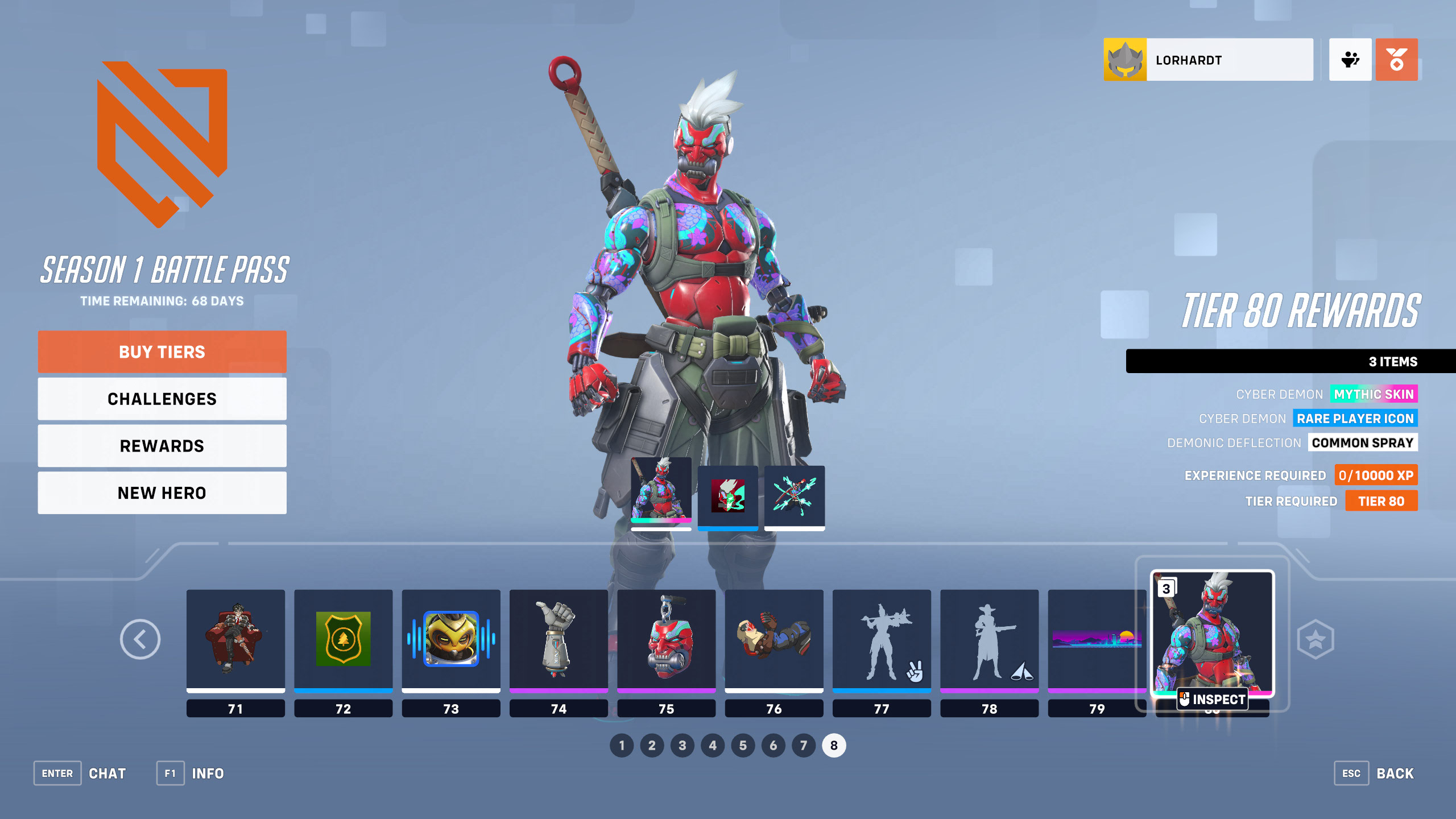
As part of the decision to make Overwatch 2 free-to-play, Blizzard has gotten rid of the original game’s loot boxes and has replaced them with Battle Passes. Each Battle Pass offers up to 80 tiers of cosmetic rewards like skins, emotes, weapon charms, and more, though only a handful will be available for free. To unlock the rest of them, players will need to purchase the Premium reward track of each Battle Pass for $10 and then progress through the tiers.
Regardless of whether players choose to get the Premium Battle Pass, they’ll progress through it in the same way: by earning XP. This is primarily achieved through regular gameplay, but you can also get big chunks of XP by completing daily, weekly, and seasonal challenges, too. The developers have designed the vast majority of challenges so that they’re simple and straightforward (think “Win 10 games” or “Deal or boost 100,000 damage”), which ensures that they won’t encourage bad player behaviors.
You’ll also get a 20% XP boost for playing while grouped up with others and an additional 20% if you own the Premium Battle Pass track. With that 20% XP boost (access to the Premium Battle Pass was provided by Blizzard), I’ve been ranking up every 3-5 matches depending on how many challenges I’m able to complete, though free-to-play players can expect leveling to take a little longer. Considering Quick Play games are typically about 15 minutes long, this progression speed feels pretty healthy.
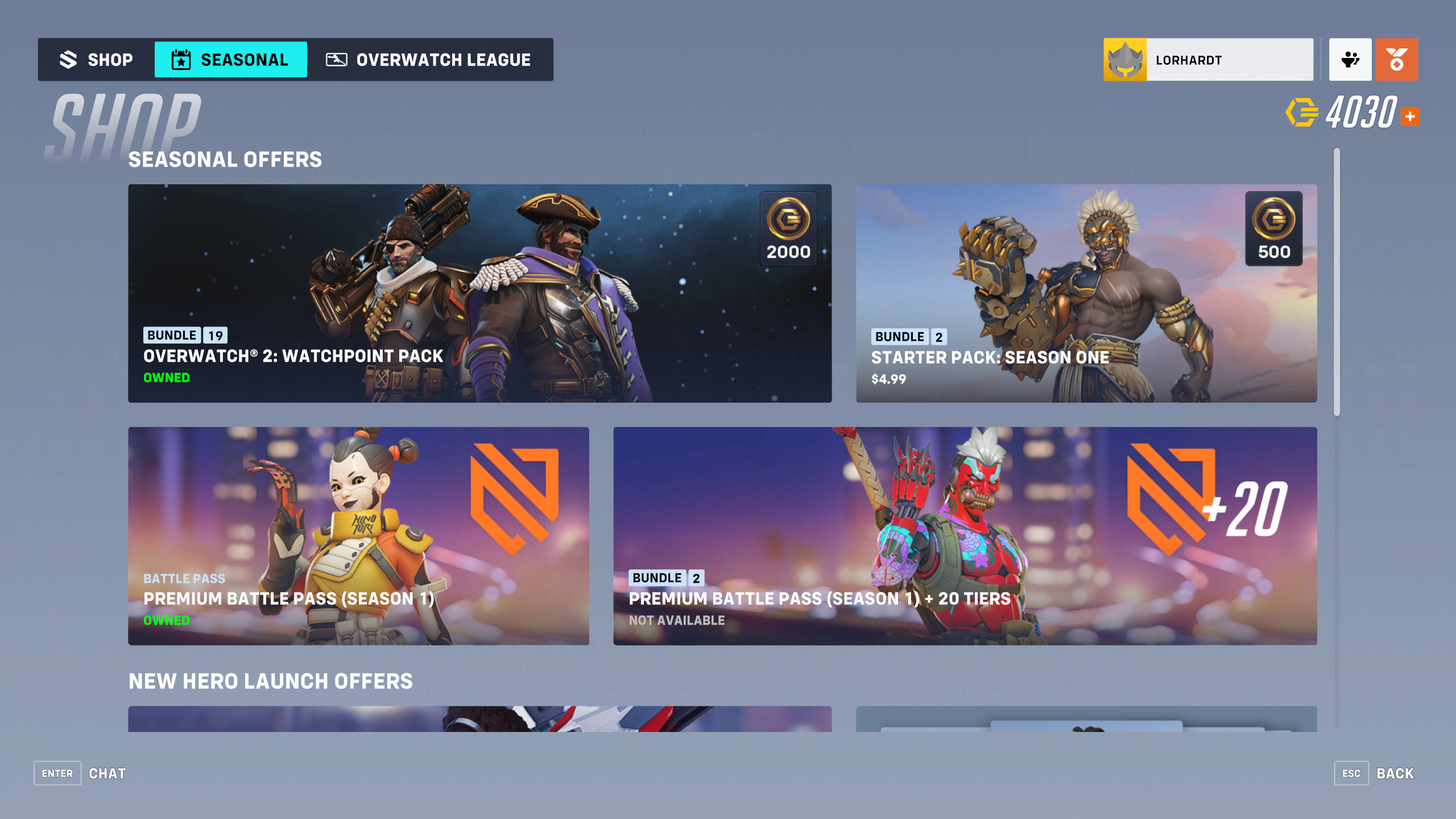
I do have one major criticism of the Battle Pass system, though, and it’s that starting with Kiriko, all of Overwatch 2’s new heroes will be tied to a significant amount of Battle Pass progression unless you pay for the Premium version. Players with the Premium Battle Pass will gain access to them immediately, but free-to-play ones will have to reach Tier 55 to unlock them.
Tier 55 on the Battle Pass is a rather steep hill to ask players to climb for new heroes.
While it’s true that most games with free-to-play models don’t allow players to access new characters without some form of progression, I think Tier 55 is a rather steep hill to climb. Blizzard has to nudge people towards the Premium Battle Pass somehow, but access to dozens of extra cosmetics — including Overwatch 2’s new customizable Mythic skins — sweetens that deal quite a bit already.
Players will also earn Overwatch Coins for the new in-game shop by completing challenges. Cosmetic skins and other rotating items can be directly purchased, with the shop offering exclusive cosmetics not available via the Battle Pass. You can also choose to buy Overwatch Coins at a rate of 100 per dollar you spend. Notably, you can use 1,000 Overwatch Coins that you’ve earned to purchase Premium Battle Passes, allowing you to save some money each season if you don’t care about the shop’s offers. The developers have also confirmed that heroes from previous Battle Passes will be purchasable in the shop.
Overwatch 2: The new player experience
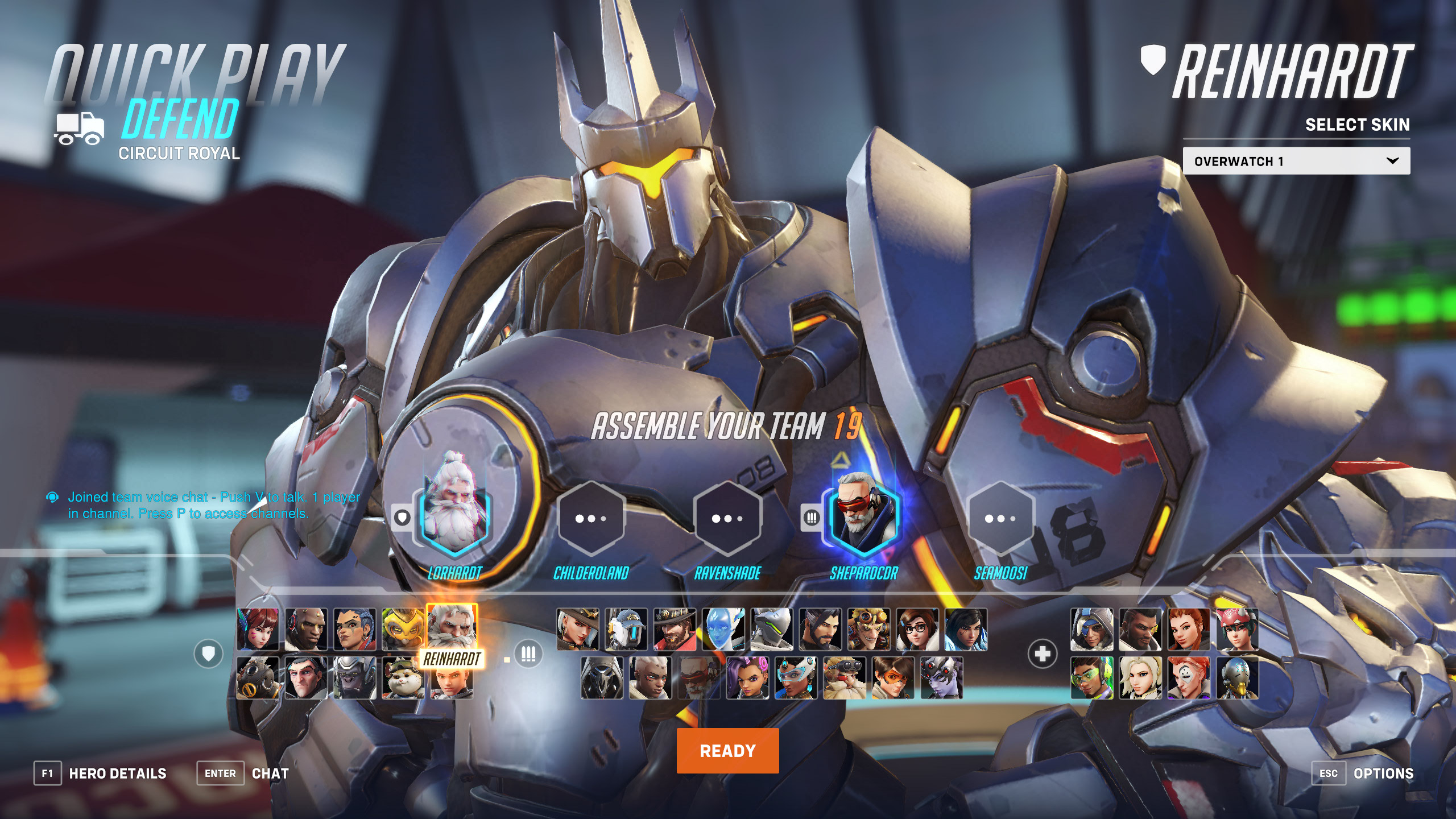
New in Overwatch 2 is the First Time User Experience (FTUE), an onboarding system that slowly gets new players up to speed with the many different heroes and modes that the game has to offer (players that owned the original Overwatch won’t have to go through this). This progression system restricts what modes and heroes new players can play at first, gradually unlocking access to the original game’s roster of heroes over the course of roughly 100 matches as players are taught the core concepts of Overwatch gameplay.
Blizzard says that this system is being added to address complaints that starting Overwatch is too overwhelming. I can commend the developers for attempting to make a game as complex and layered as Overwatch more welcoming. With that said, requiring players to play 100 games before they can access every hero from the original game seems like a high requirement. That’s a lot of time, and I anticipate that many new players will be frustrated that they’re not allowed to play a hero they think looks cool because they’re stuck with training wheels. If you’ve never played Overwatch before and are considering jumping in with Overwatch 2, know that you’ll have to go through the FTUE.
Overwatch 2 presentation: Graphics and audio
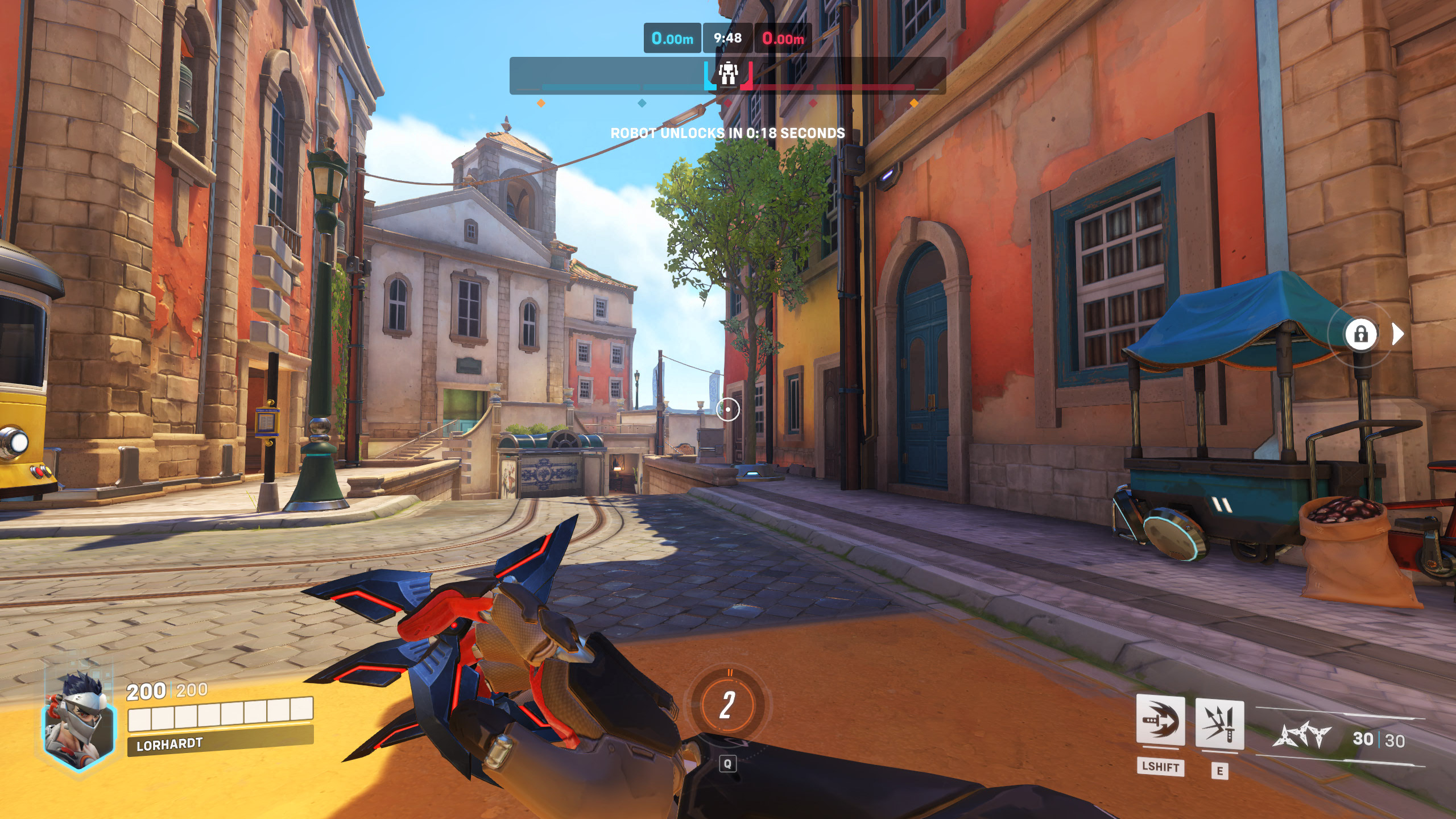
Overwatch 2 is an absolute joy to look at and listen to.
Overwatch 2 also sports brand new visuals and a fresh new sound design, elevating the already-stylish presentation of the original. Each hero has a brand new default appearance and visual effects (you can use the classic skins from the first game if you’d like), and each map has been overhauled with new lighting, skyboxes, and textures. Meanwhile, weapon sound effects and ability impacts sound meatier and punchier than ever before, making them feel incredibly satisfying to use. I don’t love every change — King’s Row being set during the day will never not be weird to me — but for the most part, Overwatch 2’s presentation is hard to fault.
The sequel also brings an overhaul to the user interface, which has been made cleaner and more minimal compared to the original game. The Overwatch UI was pretty simple, and I’ve always enjoyed the style of its slanted health bars and ability icons, so I’m mixed. It’s hardly a problem, though.
Overwatch 2: Performance and stability

Overwatch has always been a very stable game in my experience, and so far, that hasn’t changed in Overwatch 2. While the sequel is definitely sharper than the original, it’s still fairly easy to run at high framerates and settings without any noticeable performance issues.
With that said, I recommend turning AMD FidelityFX Super Resolution and its image sharpening capabilities off while playing Overwatch 2. On my i5-12600K, RTX 3070, and 32GB of RAM-equipped rig, turning the feature on led to the entire game looking extremely blurry and low-res. Your mileage may very, however.
It’s also important to note that I haven’t been able to test the game on a console like the Xbox Series X yet, as the early access version of Overwatch 2 I have access to is exclusive to PC. Once the game launches in full, I’ll give the console version a try and update this review-in-progress with thoughts on the experience.
Overwatch 2: Conclusion
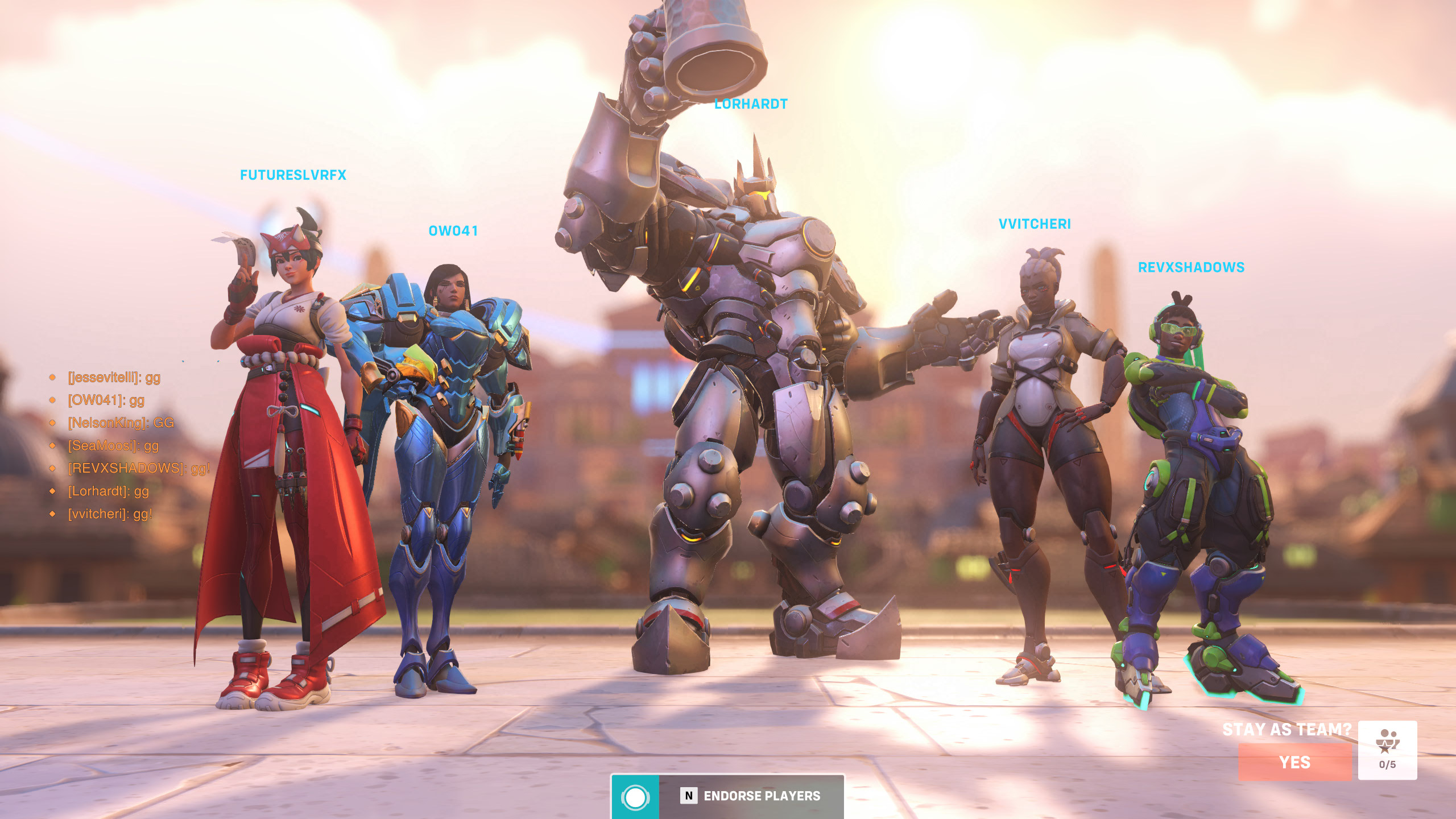
In the months leading up to Overwatch 2’s release, something I’ve seen people ask constantly is, “Why does this sequel exist? Couldn’t this be a large update to the original game?” After spending a significant amount of time playing Overwatch 2, it’s an obvious “yes.”
This is basically just Overwatch, but with some significant gameplay changes, a new content development model, and an audio/visual makeover. Perhaps the “2” in the title will feel justified when the game’s PvE campaign offerings launch in 2023, but right now, it’s not exactly clear why this had to be a sequel.
Ultimately, I don’t care about the optics of Overwatch 2’s name, and I don’t think anyone else should, either. I care about the fact that it’s significantly more enjoyable and exciting than the original experience has been in ages. I care about not having to pull the lever of a virtual loot box slot machine anymore and being able to actually earn cosmetic items directly. I care about the move to free-to-play, which makes it easier than ever before to jump in and see what Blizzard’s latest IP is all about.
While it’s not perfect — few things ever are — Overwatch 2 represents the arrival of the foundational changes needed to return to its former heights. What I’ve played of the game so far has convinced me that Blizzard is taking this franchise in the right direction, and I think most players will come to feel the same way once they go hands-on themselves.
Overwatch 2 launches on Xbox Series X|S, PS5, PS4, PC, and Nintendo Switch on Oct. 4, 2022. It’s likely going to be one of the best Xbox shooters available, and since it’s free-to-play, it doesn’t cost anything to check it out. Alternatively, players can purchase the Overwatch 2: Watchpoint Pack that provides access to Season 1’s Premium Battle Pass, 2,000 Overwatch Coins, and a bundle of unique Legendary skins.




